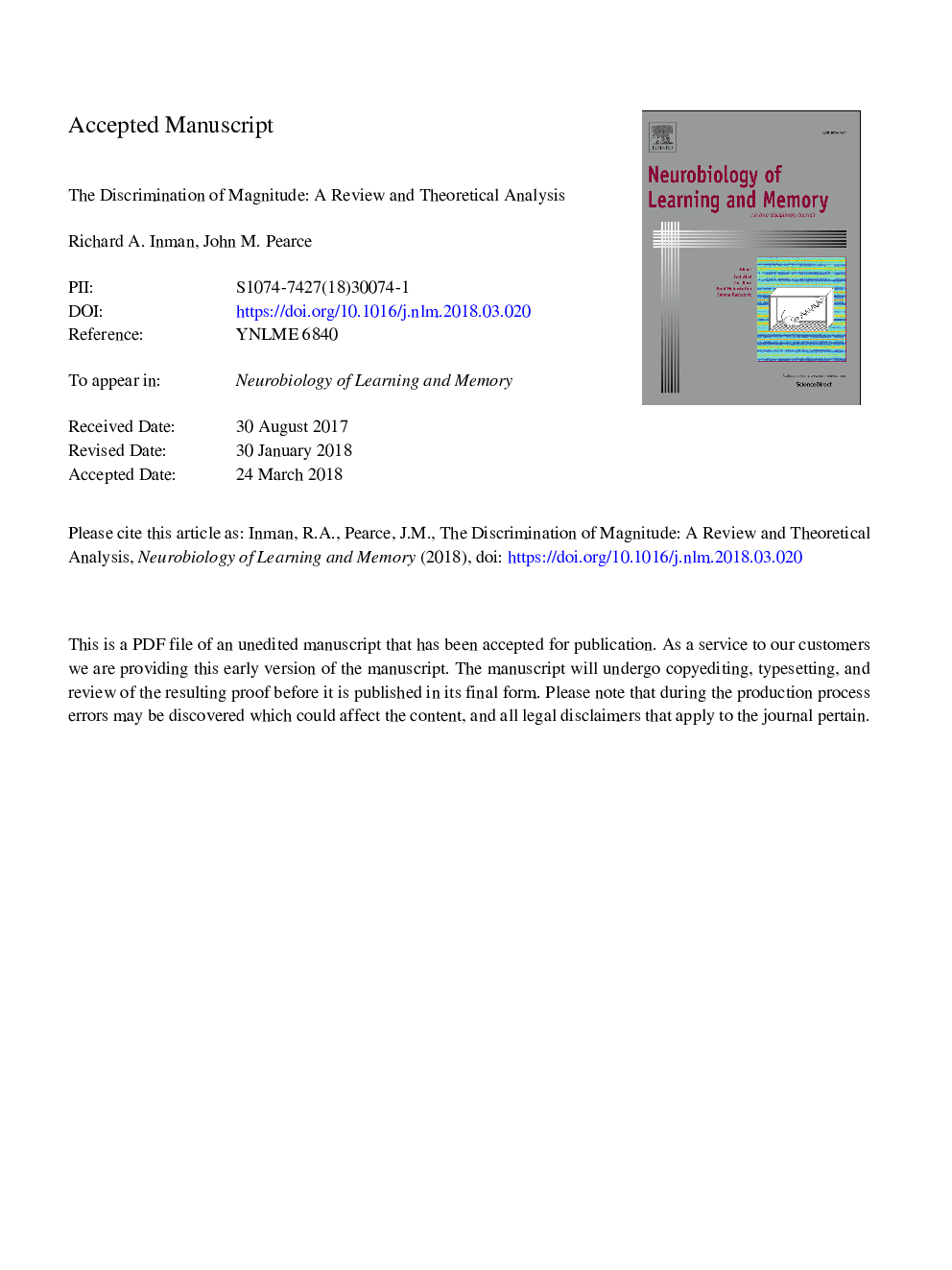| Article ID | Journal | Published Year | Pages | File Type |
|---|---|---|---|---|
| 7298680 | Neurobiology of Learning and Memory | 2018 | 54 Pages |
Abstract
In a discrimination based on magnitude, the same stimulus is presented at two different magnitudes and an outcome, such as food, is signalled by one magnitude but not the other. The review presented in the first part of the article shows that, in general, such a discrimination is acquired more readily when the outcome is signalled by the larger rather than the smaller of the two magnitudes. This asymmetry is observed with magnitudes based on sound, odour, temporal duration, quantity, and physical length. The second part of the article, explores the implications of this pattern of results for the theory of discrimination learning presented by Pearce (1994). The asymmetry found with discriminations based on magnitude contradicts predictions derived from the original version of the theory, but it can be explained by a modified version. The asymmetry also has important implications for understanding how animals represent magnitudes.
Related Topics
Life Sciences
Neuroscience
Behavioral Neuroscience
Authors
Richard A. Inman, John M. Pearce,
